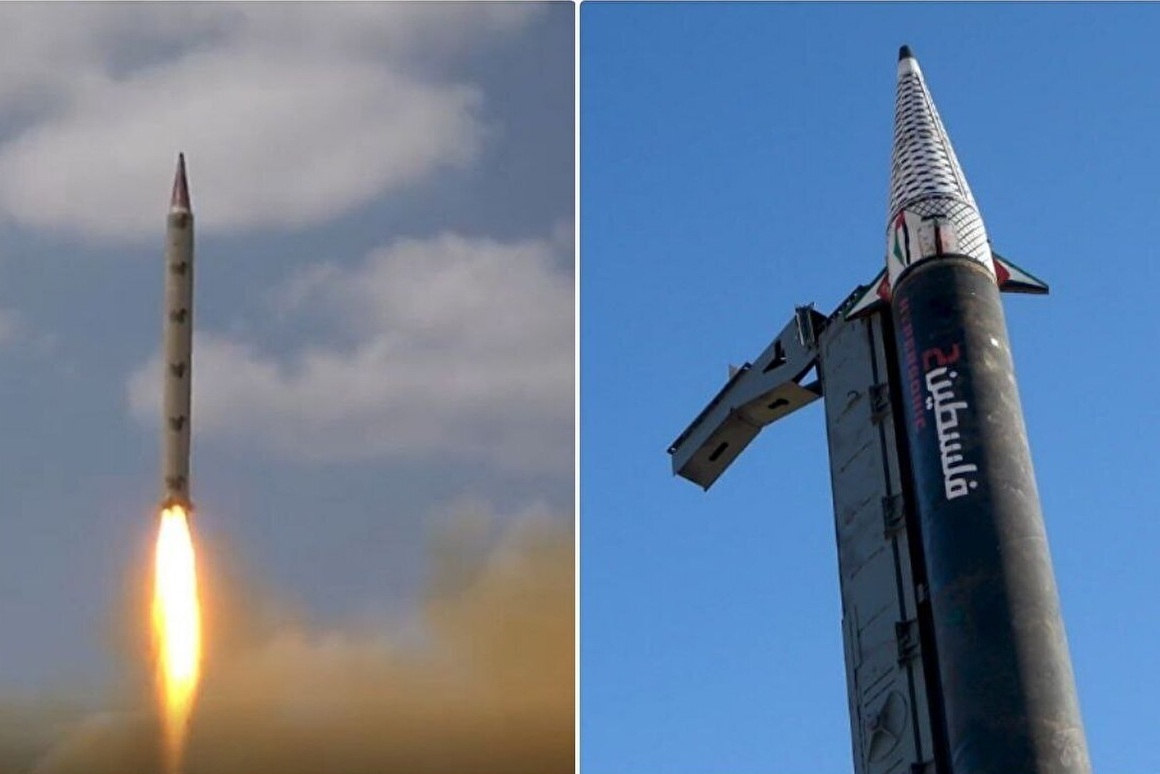Zionist Regime's Aerial Blockade with a Mysterious Ballistic Missile
TEHRAN (Defapress) - The Zulfiqar missile is a new name that sends shivers down the spine of the Zionist regime and its allies, a missile that has seriously disabled the regime's airports in recent days, further tightening the noose of the air blockade around this criminal regime.

The Ansar Allah movement has repeatedly declared its readiness to use all its capabilities in defense of the oppressed Palestinian people and has indeed remained steadfast in this regard, taking significant actions. The launch of the Zulfiqar missile is one of Ansar Allah’s key tactics in confronting the Zionist regime, besieging the airports of the occupied territories, and pressuring the regime to halt its aggression against Gaza.
This missile, alongside the Palestine-2 missile which has been used against the Zionist regime in the occupied territories for some time can deliver devastating blows to the Zionist enemy in the long term. However, the Zionist regime has already been left helpless in the face of these missile strikes.
Fabian Hinz, a columnist for the International Institute for Strategic Studies, wrote in an article titled "Made in Yemen: Examining the Houthis’ Capabilities": "The Houthis (Ansar Allah) have taken steps toward developing indigenous weapons production. Since March 15, 2025, the U.S. military has launched a new round of attacks on Yemen, aiming to secure shipping routes in the Gulf of Aden and the Red Sea."
Hinz pointed to Ansar Allah’s missile capabilities in disrupting the movement of Zionist-regime ships, claiming: "The command and decision-making structures of the Houthis (Ansar Allah) remain opaque, making it difficult to assess Iran’s political and operational influence. However, the well-documented nature of Houthi missiles and their drone and missile arsenals, used in attacks against Israel and in the anti-shipping campaign in the Red Sea and Gulf of Aden provides insight into the material dimension of Iran-Houthi relations."
The missiles referred to by foreign media as "Yemeni missiles" fired into the occupied territories include the Palestine-1, Palestine-2, and Zulfiqar with a range exceeding 2,000 kilometers. Foreign field sources claim that the Zulfiqar is an optimized version of Iran’s Kheibar-Shekan or Rezvan missile, with a range of over 1,400 kilometers and a speed exceeding Mach 4.
Little information is available about the Zulfiqar missile. However, if we assume similarities between Iran’s Kheibar-Shekan missile and Yemen’s Zulfiqar we can deduce the following:
1) Range: Over 1,400 kilometers
2) Maneuverability: Capable of evading missile defense systems
3) Type & Speed: A ballistic missile with a speed of approximately Mach 5 (around 6,125 km/h, assuming Mach 1 = 1,225 km/h)
The key difference between the Zulfiqar and Kheibar-Shekan/Rezvan lies in their fuel type. The Zulfiqar reportedly uses liquid fuel (according to Hinz), whereas the Kheibar-Shekan uses solid fuel. The Kheibar-Shekan has a warhead weight of 500 kg and a total weight of 4.5 tons. While the Zulfiqar's exact weight remains unspecified, it is likely similar. Field sources also suggest structural similarities between the Zulfiqar and Iran’s Rezvan missile (an optimized version of the "Qiam" ballistic missile).
Western analysts claim that Iran has taught missile technology including the assembly of missiles like the Zulfiqar, to countries within the Axis of Resistance. The International Institute for Strategic Studies columnist alleges: "Iran has a long-standing pattern of fully transferring missile and rocket systems to non-state partners, enabling indigenous production. Since at least the late 2000s, Tehran has supported local production (toward self-sufficiency in the Axis of Resistance) by designing systems for local assembly, providing technical training, manufacturing machinery, and key components like guidance kits and specialized parts documented in Gaza, Iraq, Lebanon, and Syria."
As mentioned, detailed information about the Zulfiqar missile remains scarce. However, it appears that its range in newer versions used by Yemen’s army and popular forces exceeds 1,400 kilometers, given that the distance from Yemen’s coast to the occupied territories is over 1,400 km.
